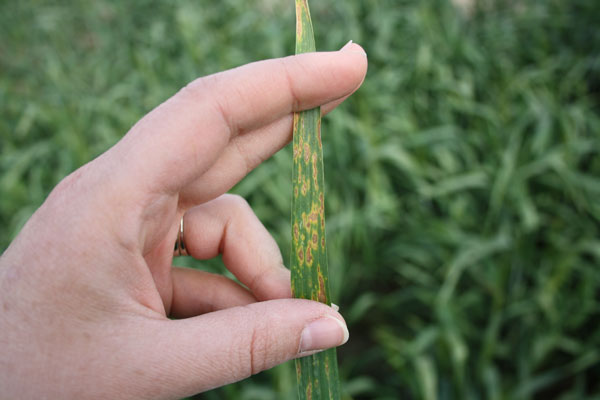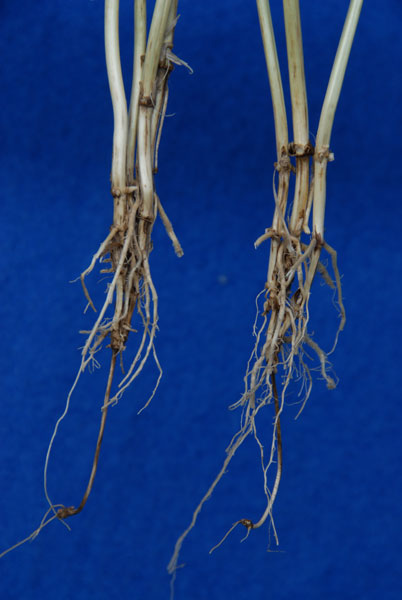Canada
November 5, 2014
Managing diseases is a challenge for producers. There is a lot to think about, ranging from weather conditions to crop type and susceptibility.
Conventional farming relies on a number of strategies to keep diseases at bay, including the safe use of chemical herbicides. But for organic food producers, one of the fastest growing sectors in the Canadian food industry, going chemical free and choosing a naturally resistant or tolerant variety is critical.
This is where Dr. Myriam Fernandez, plant pathologist at Agriculture and Agri-Food Canada’s Semiarid Prairie Agriculture Research Centre (SPARC) steps in. She has recently completed a research project that assessed the reaction of various wheat species under organic management to leaf spot and root rot diseases. This is the first data of its kind for North America, with results having just been published in two manuscripts in the Canadian Journal of Plant Science: leaf spots and root rot.
Leaf Spot
The leaf spot complex (tan spot, septoria leaf blotch complex and spot blotch) is one of the most prevalent and widespread wheat diseases in Western Canada, and its impact on yield can be significant. For example, trials in southern Saskatchewan estimated that a 16% reduction of leaf spot disease corresponded to a 17% durum yield increase at Swift Current while a 6% leaf spot reduction corresponded to a yield increase of 27% at Indian Head.

This wheat plant displays a relatively severe leaf spot infection, with much of its surface area discoloured. Photo courtesy Saskatchewan Ministry of Agriculture.
Given these striking correlations, Dr. Fernandez studied the reaction of various wheat cultivars to leaf spot under organic management. Wheats studied included durum, kamut, spelt and common wheat.
- For the 14 common wheat cultivars tested, Dr. Fernandez found the greatest infection of leaf spots in AC Barrie, CDC Go, Superb and Unity. Those with the lowest infection levels were AC Andrew, CDC Bounty and Lillian.
- For six durum wheat cultivars, Kyle was the most susceptible.
- CDC Zorba was the least susceptible of two spelt cultivars and had the best rating of all the varieties and crop types in the study.
- Kamut wheat was similar to the common and durum wheats for leaf spot severity.
Root Rot
Common root rot is caused by fungal pathogens – Cochliobolus sativus and Fusarium species being the two prime culprits in western Canada. Root rot stunts the plant’s ability to thrive and leads to crop losses. The presence of this disease is expected in most fields and environments, so producers, especially organic ones, would do well to choose less susceptible varieties.

Dark brown spots or blotches on the roots and subcrown internodes (long section of the plant between the crown and seed) indicate infection.
In her study, Dr. Fernandez found:
- The greatest severity of common root rot was observed in spelt wheat, followed by durum wheat and kamut. Common wheat had the lowest average severity.
- For individual durum cultivars, AC Avonlea, Kyle and Transcend had the greatest root rot severity and CDC Verona the lowest.
- Common wheat cultivars AC Elsa, CDC Kernen and Red Fife had the greatest root rot severity and Superb and Unity the lowest.
Although her findings were aimed at organic growers, Fernandez believes it will help conventional growers as well.
“Producers can select the cultivar they grow based on its resistance to disease,” says Dr. Fernandez. “Naturally occurring disease resistance should be a factor all producers should consider. Different degrees of natural resistance are just sitting there, so why not use them to your advantage?”
The work will also benefit breeding programs whose objective is to develop wheat varieties suited for organic production in Western Canada.